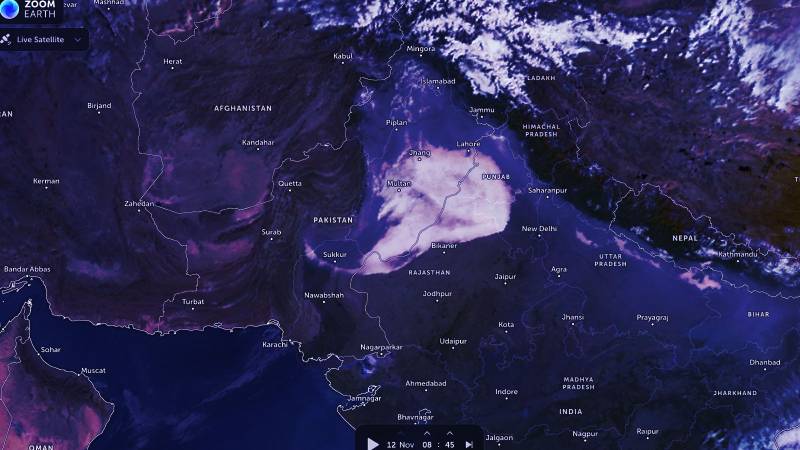
Several cities in Pakistan, including Lahore, Faisalabad, Okara, Sahiwal, and Multan, are currently battling severe smog, with Lahore experiencing the worst air quality in the world. This month, some areas of the city saw the Air Quality Index (AQI) soar above 1200, far exceeding safe levels. The AQI measures pollutants like fine particles (PM2.5), larger particles (PM10), nitrogen dioxide (NO2), and ozone (O3). An AQI above 300 is considered hazardous, while an AQI between 151 and 200 is categorized as unhealthy.
Satellite images now show the thick, toxic haze covering many parts of Punjab and much of northern India. The dense smog is so bad that it can be seen from space in NASA's satellite pictures.
According to Dr. Ashraf Nizami, president of the Pakistan Medical Association's Lahore chapter, hospitals are overwhelmed with tens of thousands of patients suffering from respiratory and heart diseases. Many have been seeking treatment at hospitals and clinics in recent weeks. Dr. Nizami also pointed out that the mental health impact of the poor air quality is often overlooked.
Punjab’s Senior Minister, Marriyum Aurangzeb, shared the government's response to the smog crisis, revealing that Lahore endured 275 days of unhealthy AQI levels last year, with temperatures rising by 2.3 degrees Celsius. In response to the worsening pollution, authorities shut down all primary and secondary schools in Lahore after the AQI surpassed 1,000 last week. Punjab's Secretary for Environment, Raja Jahangir Anwar, warned that schools may remain closed if air quality doesn’t improve. He emphasized that young children are especially vulnerable to the harmful effects of smog and suggested that online learning, similar to the COVID-19 pandemic, may be resumed.
The government has also taken steps to reduce pollution, including banning unfiltered barbecues and motorized rickshaws. To address agricultural pollution, the government has distributed 1,000 subsidized super-seeders to farmers to prevent them from burning rice stubble. Legal action has also been taken against farmers who violate the ban on stubble burning. Additionally, more than 600 of the 11,000 brick kilns in the region that failed to adopt eco-friendly zigzag technology have been demolished, including 200 in and around Lahore.
Climate expert Imran Khalid stressed that improving fuel quality is not enough to tackle the pollution problem. He explained that vehicles and engines also need to be upgraded for the better fuel to have a real impact. While Pakistan has access to Euro 5 fuel, it is not widely available, and the more advanced Euro 6 fuel is the standard in neighboring India. Khalid added that there is little data on how many vehicles in Pakistan have engines that meet Euro 5 standards.
While most of Lahore’s smog is locally generated, nearly 30% comes from neighboring India.

